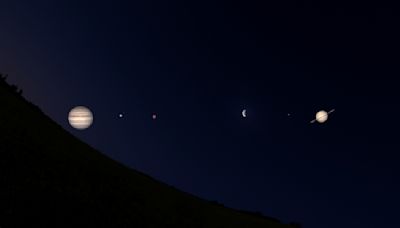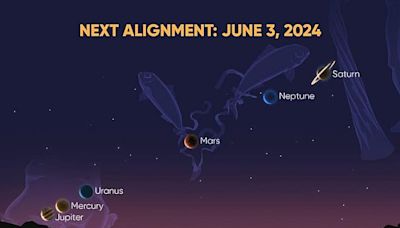Search results
Overview. Mars is the fourth planet from the Sun – a dusty, cold, desert world with a very thin atmosphere. Mars is also a dynamic planet with seasons, polar ice caps, canyons, extinct volcanoes, and evidence that it was even more active in the past. Mars is one of the most explored bodies in our solar system, and it's the only planet where ...
Mars is no place for the faint-hearted. It’s dry, rocky, and bitter cold. The fourth planet from the Sun, Mars is one of Earth's two closest planetary neighbors (Venus is the other). Mars is one of the easiest planets to spot in the night sky – it looks like a bright red point of light.
2 days ago · Mars, fourth planet in the solar system in order of distance from the Sun and seventh in size and mass. It is a periodically conspicuous reddish object in the night sky. Mars is designated by the symbol ♂. Sometimes called the Red Planet, Mars has long been associated with warfare and slaughter. It is named for the Roman god of war.
May 6, 2024 · Mars is a terrestrial planet. It is small and rocky. Mars has a thin atmosphere. Mars has an active atmosphere, but the surface of the planet is not active. Its volcanoes are dead. Time on Mars. One day on Mars lasts 24.6 hours. It is just a little longer than a day on Earth. One year on Mars is 687 Earth days.
11 min read. The red planet Mars, named for the Roman god of war, has long been an omen in the night sky. And in its own way, the planet’s rusty red surface tells a story of destruction....
Mars is the fourth planet from the Sun and last of the terrestrial planets and is around 227,940,000 km from the Sun. The planet is named after Mars, the Roman god of war. It was known to the ancient Greeks as Ares, their god of war. This is thought to be because of the blood-red color of the planet which was also used by other ancient cultures.
Jul 20, 2021 · NASA’s Mars 2020 Perseverance rover has begun its search for signs of ancient life on the Red Planet. Flexing its 7-foot (2-meter) mechanical arm, the rover is testing the sensitive detectors it carries, capturing their first science readings.



















